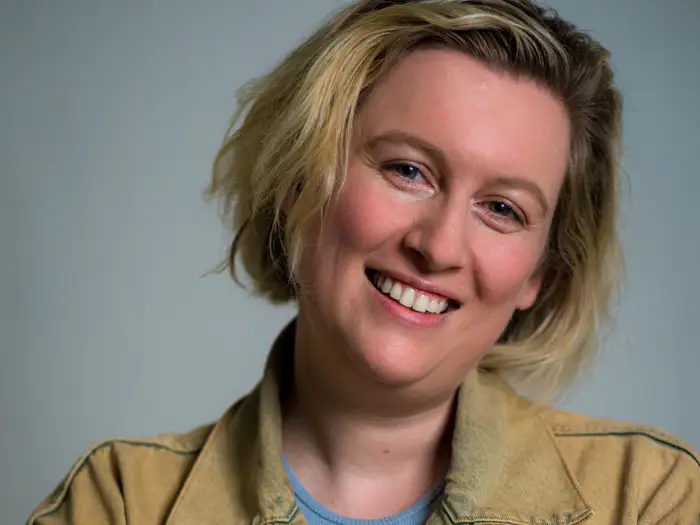AI is reshaping Hollywood. From script evaluation to visual effects, studios are exploring how to use it to cut time and costs. But for creatives, AI isn’t just a threat — it’s creating entirely new career paths.
Take Minta Carlson, also known professionally as Araminta K. She’s a Senior Creative AI Architect at Moonvalley’s Asteria Film Co., a studio cofounded by filmmaker and actor Natasha Lyonne and filmmaker Bryn Mooser. Moonvalley recently raised $84 million and is pitching an ethical AI model called Marey.
Minta’s role? Helping studios fine-tune AI models so that creative visions can come alive onscreen.
From Theater to AI Film Studio
Minta’s path wasn’t traditional. She studied theater directing and playwriting, then worked in graphic design and web development. But in 2022, when tools like Stable Diffusion started to emerge, she taught herself how to train AI models.
“I wasn’t happy with the results out of the box,” she recalls. “So I learned how to fine-tune the models — curating datasets, evaluating images, and shaping outputs into something usable for storytelling.”
Those skills — part technical, part artistic — led her to Asteria, where she now works on projects ranging from animated shorts to VFX background shots. Recently, she helped a studio extend a party scene that would’ve otherwise been cut due to budget constraints.
Why Art Skills Still Matter in the Age of AI
For Minta, AI isn’t replacing creativity — it’s amplifying it.
“If you just prompt a model, you get its bias,” she explains. “What’s hard to teach is taste and a critical eye. That comes from an art background.”
She emphasizes that illustrators, animators, colorists, creative directors, and concept artists all have a place in this new AI-assisted workflow. The key is learning how to communicate visual ideas so AI becomes a tool, not a substitute.
Practical Advice for Creatives Exploring AI
Minta recommends:
-
Don’t chase every tool. Start with a creative challenge you want to solve and test models against it.
-
Leverage open-source platforms. Sites like Replicate and Fal let you quickly try different models.
-
Prioritize creativity. Don’t just repeat the same drawing endlessly. Explore variations and unique styles — that perspective is what AI can’t generate on its own.
She stresses that technical skills help, but they’re not enough: “Knowing how to illustrate and animate is valuable, but creativity drives the best results.”
The Future of Artists in Hollywood
Some fear AI will replace artists, but Minta sees the opposite.
When companies tried to cut costs by swapping artists for AI alone, the results fell flat. “It was obvious the people asking didn’t understand art or AI,” she says. “Even when colleagues tried, the output was never good enough.”
Now, she says most projects she works on are artist-led, with AI used as a supportive tool. Instead of eliminating jobs, she believes AI will unlock productions that might otherwise never have been funded.
“AI doesn’t have a perspective or a vision. That’s why artists still matter. AI just helps us bring those visions to life faster.”
Bottom Line
AI is here to stay in Hollywood, but so are artists. The real opportunity lies at the intersection: creatives who embrace AI without losing their artistic voice will be the ones shaping the industry’s future.
Are you tired of the endless and frustrating job search process? Look no further than FasterGig – the smarter, automated method that will help you get remote video jobs 10 times faster with minimum effort.
With FasterGig, you can find new job opportunities in your area or even remote positions without the need for previous experience. Our website offers a quick and easy way to apply to jobs and find gigs that fit your skills and needs.
Say goodbye to the stress and time-consuming job search process and hello to a new job with FasterGig!
Click here to get started on your journey towards a brighter and more fulfilling career in the video production industry.

